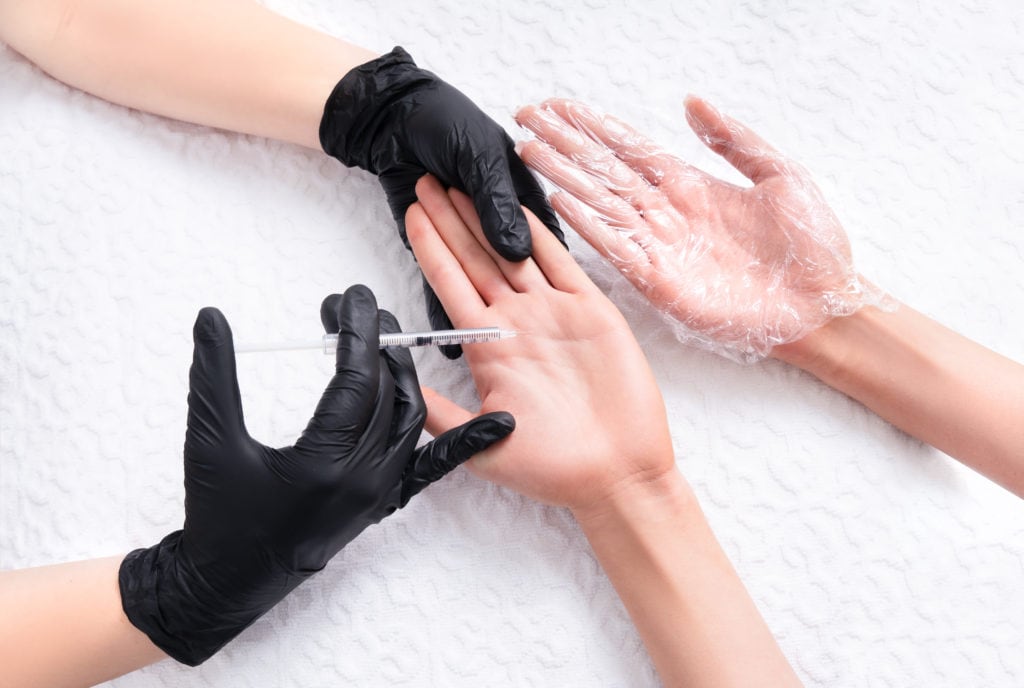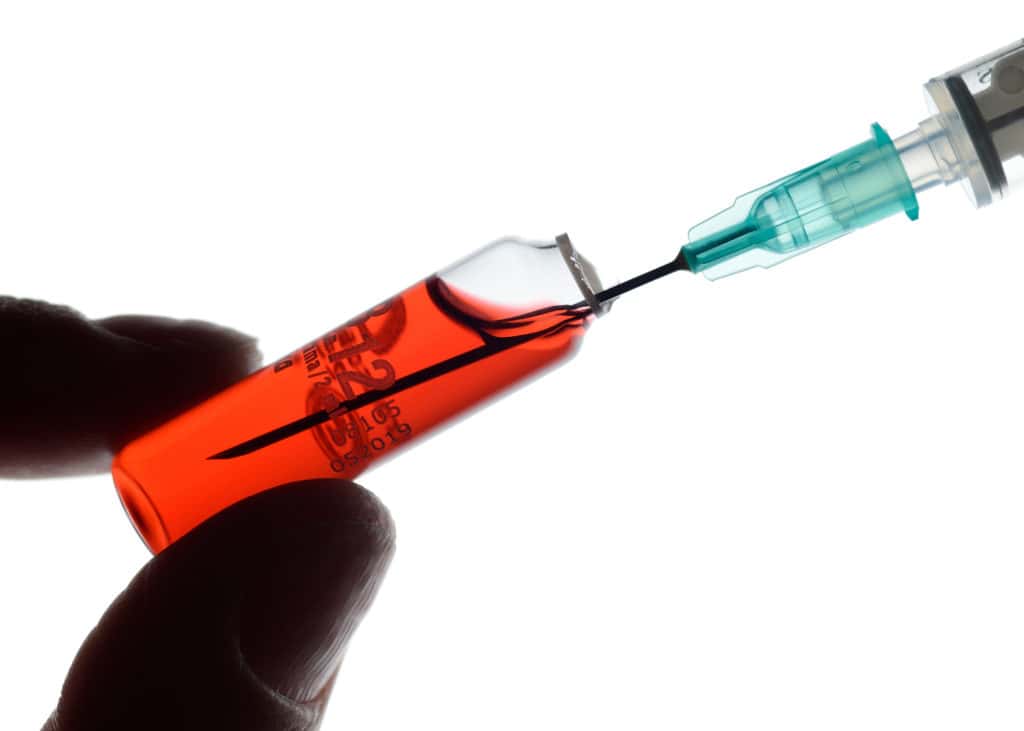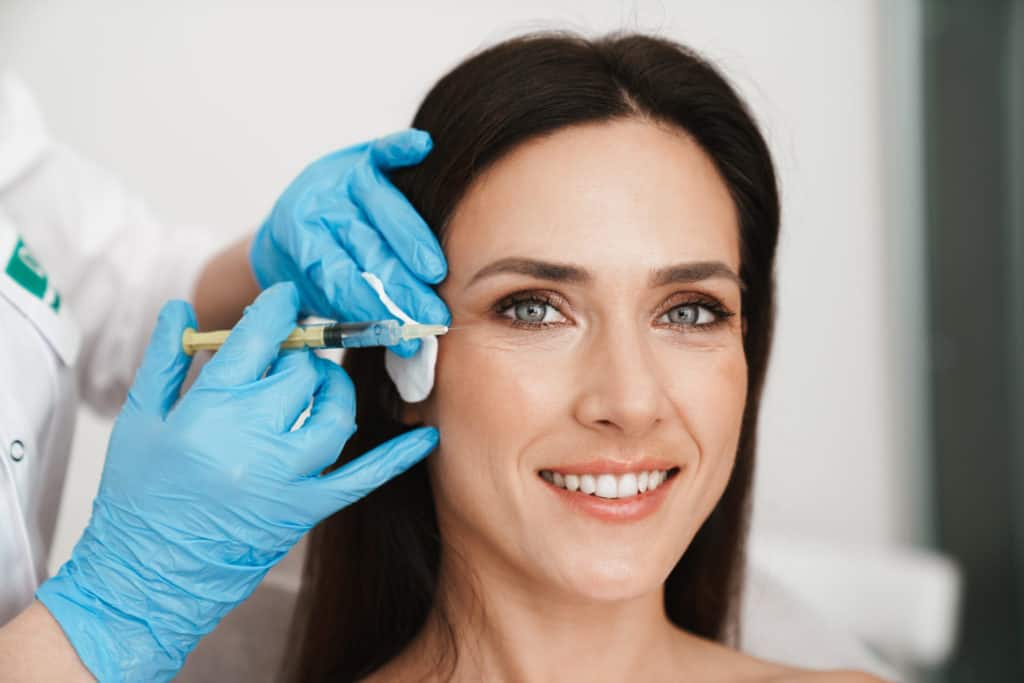Hyperhidrosis is a condition that causes the body to sweat, specifically the feet, hands, face, and armpits, excessively. While this condition isn’t life-threatening, it can be uncomfortable and cause embarrassment and psychological trauma for others. In that case, dermatologists can help determine why a person has excessive sweating and help control excessive sweating.
What Causes Hyperhidrosis?
This condition may be present from birth or might develop later in life. However, most excessive sweating cases start during the teenage years. Hyperhidrosis can also be due to an underlying health condition or no apparent cause, including:
- Primary idiopathic hyperhidrosis. The word “idiopathic” means “of unknown cause.” Hyperhidrosis could be localized in most cases, indicating excessive sweating of the palms and soles.
- Secondary hyperhidrosis. Excessive sweating is due to underlying health conditions, such as obesity, gout, menopause, a tumor, mercury poisoning, diabetes mellitus, or hyperthyroidism (overactive thyroid gland).
What Symptoms Does Hyperhidrosis Cause?
Hyperhidrosis symptoms can vary widely and impact a person’s quality of life. For minor symptoms, they may diminish and flow over a long time. However, excessive sweating may be an everyday challenge, a constant source of frustration and insecurity for those affected.
Hyperhidrosis affects people differently in which sweat may:
- Pool under the arms or around the back.
- Soak the shirt to the point that you need to change clothes to feel comfortable.
- Bead on the cheeks or forehead.
- Dampen or drip down the hands or soak the socks.
Excessive sweating may also lead to:
- Itching and inflammation when sweat irritates the affected area.
- Body odor, when bacteria on the skin mix with sweat particles.
- Residue from combinations of sweat, bacteria and chemicals (deodorants), leaving noticeable marks on clothing.
- Skin changes, such as paleness or other discoloration, cracks, or wrinkles.
- Maceration (unusually soft or disintegrating skin) on the soles of your feet.
These symptoms may offer clues to the type of hyperhidrosis. Excessive sweating due to focal hyperhidrosis usually affects both sides of the body (both hands or feet).
Specifically, focal hyperhidrosis doesn’t cause night sweats and doesn’t go away without treatment. For generalized hyperhidrosis, an individual may sweat all over the body while sleeping.
How Is Hyperhidrosis Diagnosed?
To make a diagnosis, a doctor will review the medical history and ask questions or details about sweating, such as location, time pattern, triggers like remembering a traumatic event, or any other symptoms.
The doctor may try to rule out any underlying condition by taking blood, urine, or other lab tests. Sweat tests may be carried out, including iodine-starch test, skin conductance, or thermoregulatory sweat test to pinpoint areas of sweating and estimate the severity of the condition may also be carried out.
What Treatments Are There For Hyperhidrosis?
Indeed, the condition is treatable and most people experience significant improvement. The type of treatment to receive depends on which part an individual is experiencing excessive sweating and overall health. Here are the non-invasive treatment options available without needing to undergo an incision:
Antiperspirants
To treat hyperhidrosis, antiperspirants are often the first step. This is because antiperspirants are affordable, effective, and available in regular or clinical strength. Antiperspirants are applied to the skin, underarms, hands, feet, or hairline.
The substance is pulled into the sweat glands when a person starts sweating, creating a plug. The body senses this and signals the glands to stop producing excess sweat.
Iontophoresis
This is also called the no-sweat machine,” which is a medical device that uses electricity to shut the sweat glands down temporarily. In fact, iontophoresis can also be performed at home and requires placing the hands or feet into a shallow bowl of tap water.
After which, the device then sends a low-voltage current through the water. Iontophoresis is effective but can be time-consuming. To notice an improvement, the needed treatment sessions are between six to 10 treatments, each lasting between 20-40 minutes.
Botox (Botulinum toxin injections)
This treatment is usually associated with wrinkles, but the Food and Drug Administration (FDA) has approved Botox for underarm sweating. The procedure includes injecting tiny amounts of this medicine into different areas of the armpits and has to be performed by a dermatologist or a trained medical professional.
Botox temporarily blocks a chemical in the body that stimulates the sweat glands. Typically, the treatment usually takes four or five days to work and lasts between four to six months.
Laser Therapy for Excessive Underarm Sweating
Laser therapy has become one of the latest trends in treating hyperhidrosis. It is performed by using various devices with laser technology, including microwave and radiofrequency gadgets that aim heat sources into the exact treatment area and create a physiologic change in our sweat glands.
There are different modalities of laser therapy. Some of them are applied directly over the skin, while others may require introducing a very small needle in the skin to increase the effectiveness of the treatment.
Prescription Cloth Wipes
The prescription cloth wipes are individually wrapped cloths that contain Glycopyrronium tosylate. It is a substance proven to reduce underarm sweating. An individual can apply one wipe per day to both underarms.
Prescription Medications
Certain oral medicines prevent the sweat glands from working or excessive sweating. In fact, they’re used to treat excessive sweating all over the body. Prescription medications taken by mouth can help stop the sweat glands from producing sweat.
Anticholinergics, a class of medicines including glycopyrrolate, oxybutynin, benztropine, and propantheline, are the most common oral medications for hyperhidrosis. However, these drugs have not been studied in controlled clinical trials specifically for hyperhidrosis. They are FDA-approved for other medical conditions, so doctors use them “off-label.”
miraDry For Underarms
The miraDry system is FDA-cleared for treating unwanted underarm sweat and odor in as little as one hour. The treatment uses a handheld device to direct microwave energy to the skin where sweat glands are located. The heat it generates eliminates or damages sweat glands in the underarm.
The Bottom Line
Although sweating is a natural and essential body function, others with axillary hyperhidrosis tend to be self-conscious of their condition, which affects their well-being. ReNu Aesthetics & Wellness offers Botox, a safe, effective, and FDA-approved treatment for Hyperhidrosis or excessive sweating of the underarms. Ultimately, Botox temporarily blocks a chemical in the body that stimulates the sweat glands, drastically improving the quality of life.



